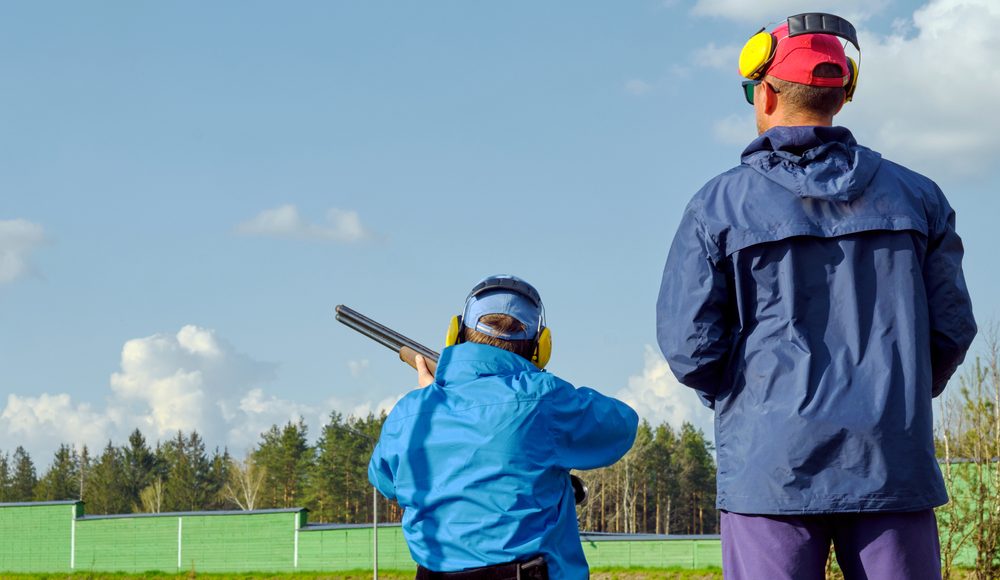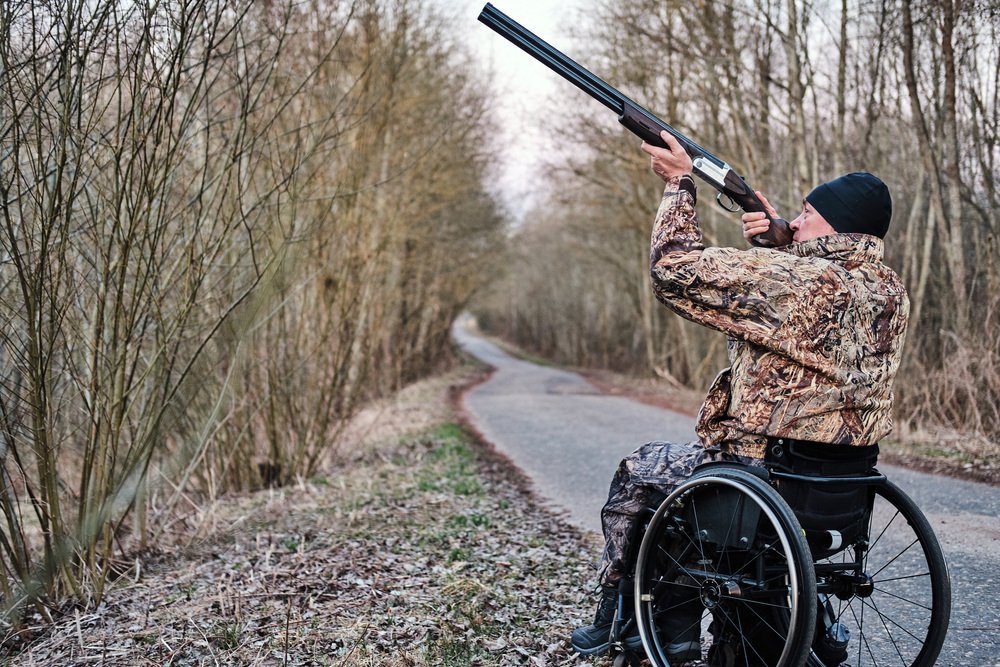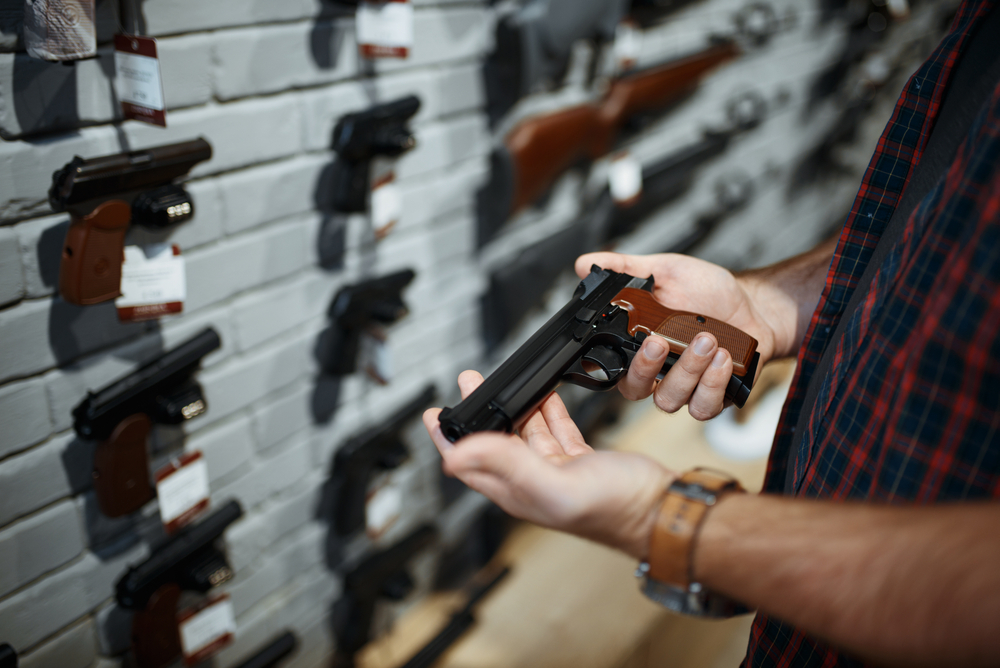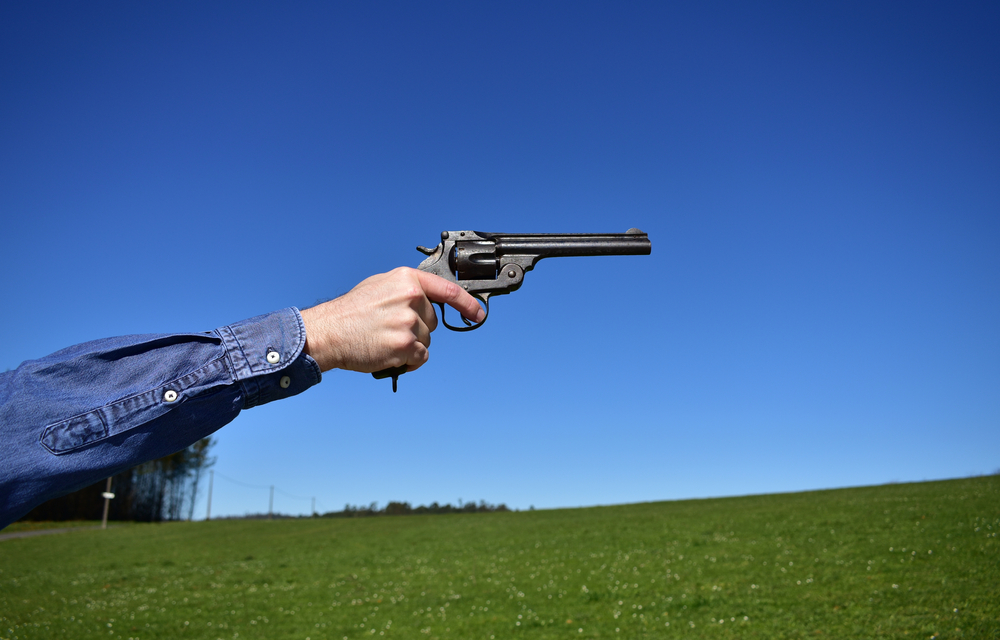Some of the best shooters I have met over the years were leg amputees, paraplegics, or individuals using wheelchairs or walking aids.
Don’t let non-disabled shooters tell you that if you are disabled, you can’t shoot firearms. It will be a little harder for you to use guns, but with the proper training, you will learn to shoot safely and have the ability to hit the target effectively.
When attacked, the average person instinctively will want to run away from the attacker and seek a place of safety. If you are disabled and unable to move fast enough, open doors, or navigate stairs, escape may not be an option. All you can do is commit to standing your ground and defending yourself to the best of your ability.
Since disabled individuals are considered effortless targets by criminals, you are also more likely to encounter opportunists that will target you instead of someone that seems more able to take care of themselves. This, in turn, means that it will be to your advantage to get a gun, learn how to shoot well, and become a Concealed Carry Weapon holder.
Most people believe that being in a wheelchair means losing all of your muscle strength very quickly. On the other side of the coin, I have seen people in wheelchairs that easily lift weights at the gym, take part in martial arts, and shoot better than many people with no disability. Your lower body may be weaker; however, upper body strength may be a good bit stronger, mainly if you use a manual wheelchair. Since upper body, wrist, and hand strength are keys to good marksmanship, and you may be able to learn to shoot and have no problems with rifles, shotguns, pistols, and revolvers.
If you also have hand, arm, or shoulder disabilities, that still doesn’t exclude you from owning and firing several guns that can save your life in a bad situation. Before you begin learning to shoot, however, you will need to do the following:
- Consult with a physical therapist that will give you exercises for the upper body, shoulder, arm, and hand strength. Your goal should be to reach a strength level where you can hold the firearm steady and control the recoil.
- Depending on your situation, you may find that no amount of exercise will improve your strength enough to hold and fire a gun. Once again, you should not give up on guns. Many devices on the market can be used to stabilize your wrists and support your shoulders. Whether you use specialized gloves or have modifications made to your wheelchair or gun, there may be a way for you to have a weapon and be able to use it at all times.
The sad fact of life is disabled people are always going to be targets of interest to criminals. The perception that you are weak or unable to stave off the attack will always put you at risk. Even if these people aren’t looking to steal something, they may try to knock you out of your wheelchair, tip it over, or pull you out of the wheelchair. Sometimes they do these things because they can, and there is no one available to stop them.
It would be nice if having a gun would protect you from these kinds of people. However, you must do much more to obtain the safety you want from being a gun owner. Even if you brandish a gun while sitting in a wheelchair, don’t count on criminals simply leaving you alone. Instead, they will remain focused on the fact that you are in a wheelchair and think they can overpower you. In their mind, you are still weaker than them and have no way to escape. They will continue the attack until they are finished with you. If you must shoot to protect yourself, don’t stop until the threat stops. Failure to do this and follow-through are the leading reasons why wheelchair shooters fall victim to their attackers.
To protect yourself and your rights, there are some essential things you must do along with buying a gun:
- Make sure you know what it is to be a safe gun owner. Never leave your gun unattended or in a place where children or intruders can get to it. Lock your gun up when you are home and have no need for it. Get good door and window security so that you can get to the gun in time if you do have a situation. Use fire fields in your home, and always make sure that you can get to your weapon quickly without the risk of someone else getting to it first. Today, far too many people lose children because they think their gun is in a safe hiding place. Others wind up victims of their firearms because someone breaks into their home and gets to it first. The only safe way to have a gun in your home is to have it locked up where only you can get to it. From there, take the extra time and effort to drill on getting to the gun in time and ensuring that your home is set up correctly to enable this.
- Get an excellent certified firearms instructor and self-defense instructor who can teach you the best shooting style and defend yourself physically. Choose instructors that listen to your needs and can give you good advice.
- Get gun owner’s insurance. In our society, anti-gunners seem to want to make everyone that fires a gun a criminal. Under these circumstances, not having a good lawyer can cause you to go to prison even though you are the victim. Gun owner’s insurance will give you access to better lawyers that are fully versed in the gun laws in your state and locality. They will help you and give you the best chance to ensure that your decision to defend yourself is not seen as a criminal act.
- Vote. As simple as it may seem, each time you vote for an anti-gunner that is soft on crime, you increase the risk of becoming a victim. The day you become a victim of a crime and face that situation without a gun because the government says you can’t have one is too late to go back and wish you had voted differently.
Some Things You Must Learn to Do
If you are incredibly hesitant about buying a gun, you can still do some things to prepare yourself and see how you feel about it. All of the items listed below can be accomplished at a gun range.
- Learn to draw and fire in different situations. Include shoot/don’t shoot scenarios once you become proficient with handling your gun and cleaning it.
- Just because you carry a handgun, that doesn’t ensure that you will be safe in those critical moments it takes to draw it. Learn multiple ways to draw your gun. Make sure that you choose a holster that you are comfortable with. There are many different designs on the market. Don’t be afraid to try out different styles to see what works best for you.
- Know and effectively carry out counter moves that will keep you from being tossed out of the wheelchair before you can draw the handgun.
- Take self-defense classes that will teach you how to defend yourself on the ground.
- Always practice situational awareness.
- Be aware of when you are most vulnerable. This includes getting in and out of a vehicle or when you have to transfer in or out of the wheelchair. If you are traveling in a group, make sure your companions know you are armed. It will also be to your advantage to have another armed person traveling with you.
- Practice drills on what to do if someone is trying to rob or harm you.
- Learn to shoot from the prone position. This will ensure you can use your gun in defensive situations after being knocked down by an assailant.
Learning to Shoot With One Hand
That is one of the essential skills that you will need as a shooter. You may have to work the hardest to achieve if you have upper body, arm, wrist, or hand weaknesses. While you can still shoot effectively with two hands, bear in mind that a two-handed shooting style requires you to be in direct alignment with the attackers. Getting into the correct position while seated in a wheelchair will cost you time while you maneuver. This is a crucial reason you will need to work with a competent instructor who has worked with disabled shooters. When on the range, you will also have to practice getting into position as you will firing the gun. Here are some other skills you should develop or try to do as much as possible:
- Learn to shoot with both your dominant and non-dominant hands. Also, practice transferring the handgun from one hand to the other quickly and safely.
- While shooting with one hand, learn to shoot to the other side of your body. Practice using each hand for both sides of the body if you can’t use the preferred hand.
- Practice twisting to each side to see if there are any threats to the side or behind you. You must be able to shoot one-handed while in the twisted position. Learn to shoot at different angles with one hand.
- To look back over your shoulder, lean slightly forward. If you have limited upper-body mobility or can’t twist, this will allow you to see your attackers. Then, practice following through on how to shoot with one hand based on how you move your shoulder. Doing this will enable you to shoot at targets behind you.
- Always remember, the more you practice with different scenarios and targets, the better you will shoot and the more confidence you will have.
Being Armed And Living With Others
In these challenging times, criminals don’t always work alone. If a riot develops or other kinds of civil unrest, you can also expect an increase in the number of gangs and other groups that seek to steal or do different types of harm. This, in turn, means that if you already live with others, they will also become targets because a disabled person is still seen as a liability by criminals. As a result, if you are armed and living with others, it is essential to make sure you are all prepared to stave off an attack, no matter whether just one person or a group conducts it.
Here are some things you and the people you live with will need to do:
- Develop defensive plans and practice routines for handling attackers.
- Communicate before and during the encounter.
- Understand how everyone will move to deal with the situation.
- Plan for situations when one or more people will be shoot and what others should be doing.
- Be the smallest target when moving from one location to another.









Amvet1960 | March 18, 2021
|
Sorry guys, the first paragraph saying you should keep the weapon locked up to keep unauthorized users from getting the gun is STUPID.
It buys into the anti-gunners bullshit. Lock up the gun – it will kill somebody all by itself.
In any scenario, immediate access is crucial – even if you’re not disabled.
DISABLED means just that. Especially if you’re in a wheelchair. That can be resolved with a small gun safe (with a key and or fingerprint activation) anchored to the chair. If not in a chair, a holster rigged to your body, ready to access IMMEDIATELY.
The rest of the article is right on. Safety, training and more training. Having the family involved is also important.
Phantom30 | March 18, 2021
|
Like the beverage commercial where the prey says to a fellow prey, I don’t have to be faster than that predator, I just need to be faster than you. Translation, handicapped are best suited standing their ground. This article addresses good issues in that regard. Many amputees are capable of handling near normal carry weight. So most traditional firearms are relevant. However the mobility limited and wheel chair class needs light weight flexible massive firepower because once it starts they are going to be in it for the duration. Two good solutions are a Black Aces Tactical Bullpup magazine feed 12ga. with #4 or #1 buckshot. It is a two hand pray and spray capability using laser designator heads up from shoulder or hip. The second choice has less recoil, an 8” barrel 300 Blackout AR pistol with drop in trigger for faster firing. A traditional semi-auto Springfield pistol is for backup only. You need to shoot threats as far away a possible.